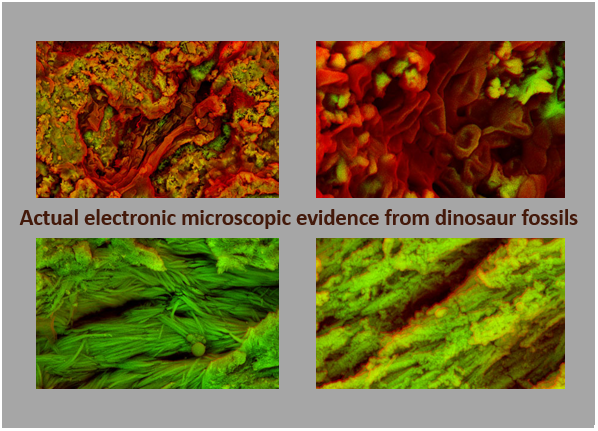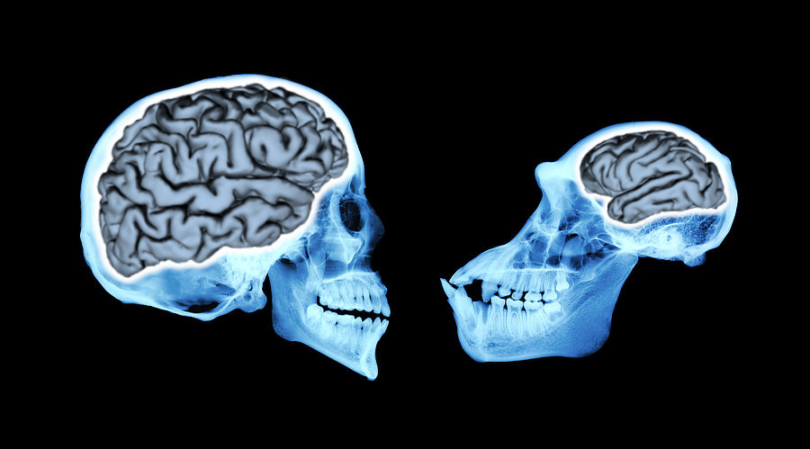First unearthed in 2000, then finally fully excavated in August of 2005, after years of hard and dedicated field work, Mary Schweitzer Paleontologist, PhD, Paleo-biologist, Evolutionary Biologist, and Molecular Biologist, of North Carolina State University in Raleigh unearthed a Tyrannosaurus Rex fossil in Hell Creek Montana with soft tissues. The T. Rex was nicknamed ‘B. Rex’ and later ‘Bob Rex’ until later when the discovery identified Bob as a pregnant eighteen year old female with medullary bone.
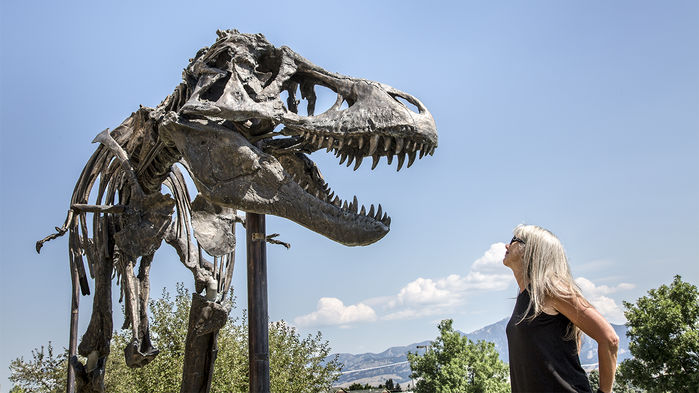

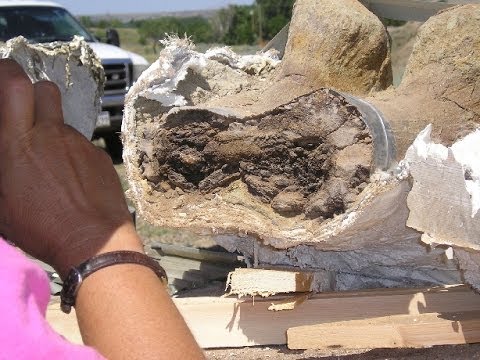
Jack Horner a curator at the Museum of the Rockies of Bozeman Montana explained regarding the process of securing the specimen from its sandstone grave, “The dinosaur was under an incredible amount of rock, when it was collected, the specimen was very far away from [the] road, and everything had to be done by helicopter. The team made a plaster jacket to get part of the fossil out, and it [the fossil specimen] was too big for the helicopter to lift. And so we had to take the fossil apart. In so doing, we had to break a thighbone in two pieces. When we did that, it allowed [our paleontologist Mary Schweitzer] to get samples out of the middle of the specimen. You don’t see that in most excavations, because every effort is made to keep the fossil intact. Because the leg bone was deliberately broken in the field, no preservatives were added. As a result, the soft tissues were not contaminated.”(4)
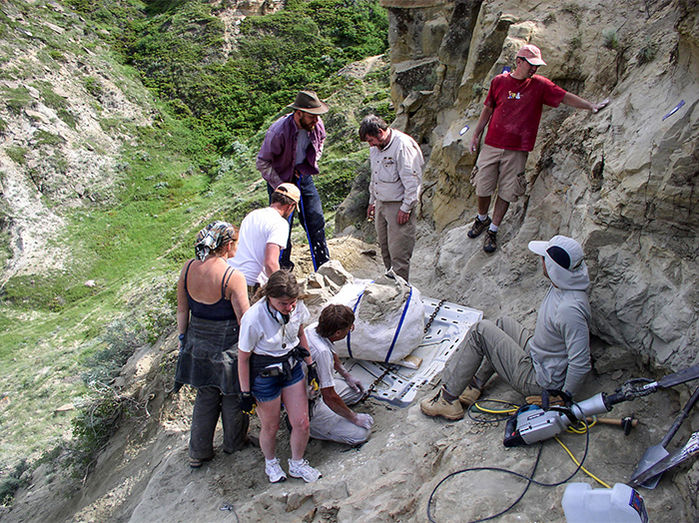
When recalling the gathering of the samples Schweitzer told LiveScience “What we found was unusual, because it was still soft and still transparent and still flexible.”
LiveScience “Mysterious Intact T. Rex Tissue Finally Explained” by Stephanie Pappas November 27, 2013
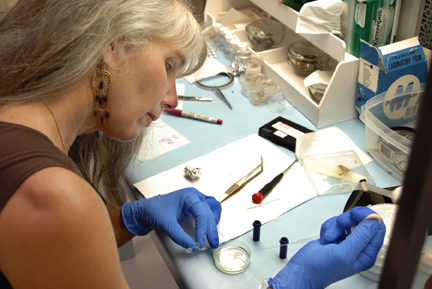
Samples from the interior of fossils are not usually [basically ever] examined as this specimens are typically immediately cast whole and transported from the field. As a result the specimen remains cast in open air while soft tissues would immediately begin to decay in the oxygen environment.
Thomas Holtz Jr. of the University of Maryland reflected on the reason other scientists had neglected to collect interior samples stated, “The reason it hasn’t been discovered before is no right-thinking paleontologist would do what Mary did with her specimens”.
Discovery “More dinosaur bones yield traces of blood, soft tissue” Ashley Yeager June 24 2015
It seemed the 65 million year old T Rex soft tissue was causing a tremor that was rocking the scientific community.
This data did not match the Darwinian evolutionary models. Therefore the first, the response was initial rejection calling for Mary to use caution, to withhold data, for the team to take a “wait and see” (5) response. Second, came the attacks namely toward the head paleontologist and Mary Schweitzer who received critical mail from colleagues that, to put it kindly were suspect of her science. (5)
Later when it became clear there was physical evidence forth coming from the electronic microscope the assumption moved from dismissing the evidence toward categorizing it as bacterial biofilms.
Then, once the soft tissue were confirmed with stunning photography the scientific community remained biased and doubtful. Thus began a great scramble to answer the puzzle the new data presented to the models of Darwinian evolution and the presumed millions of years time lines. Within a few years research papers surfaced that claimed the issue had been solved.
Research showed that as it turns out soft tissues are preserved through deep time due to the iron found in hemoglobin which forms a ‘formaldehyde-like’ protection. This protection enables soft tissues to survive decay for millions upon millions of years. The sequence of these events from rejection to new found solution supply an insight as to how the mainstream scientific community reacts toward any evidence which stands potentially in opposition to strong hold models like Darwinian evolutionary models. The response seems to be to reject any new evidence unless or until a new solution is theorized which protects these seemingly sacred models.
In the days before Mary’s disturbing and for a time ‘controversial’ discovery of soft tissue in a dinosaur in 2005, any textbook would report that during fossilization of blood vessels, skin, soft tissues, and muscle would certainly decay and disappear very quickly. No textbook expected soft tissues to last on a fossil for more than thousands of years even under the very best of conditions. Now here were these soft tissues discovered by Mary and her team which were found with transparent, pliable blood vessels containing red blood cells [and Jurassic Park fans even perhaps yet to be confirmed DNA] could never survive thousands of years let alone the bewildering idea this sample survived some 65 million years. Mary recalled being asked by a fellow scientist working the electronic microscopes while they were reviewing slides if she realized they were looking at red blood cells. Schweitzer, while recalling the event said, “I looked at this and I thought this can’t be…red blood cells don’t preserve…Finding these tissues in dinosaurs changes the way we think about fossilization, because our theories of how fossils are preserved don’t allow for this [soft-tissue preservation].”(3)
Fossilization takes hard bone and using minerals from the environment which forms a rock hard specimen which is assumed to be dry and vacant of any soft tissues. After confirming the team had found red blood cells Mary recalled, “It got me real curious as to [how we were seeing such] exceptional preservation”. Amazing, how could supposed 65 Million year old fossil remains have any soft tissue? And how could it be still being flexible? (1) Mary said in a 2014 interview considering the magnitude of which the evidence spoke, “In the end it left two alternatives for interpretation: either dinosaurs’ aren’t as old as we think they are, or maybe we don’t know exactly how these things preserved.” (5)
Soon the question became: did other specimens collected also have soft tissue? Was this specimen extremely unique and rare or common? It appears the answer was common. After doing research it was found that approximately 50% of other samples tested also had soft tissue! (2)
In fact, scientists have used what they called ‘crap’ fossils [bones dug up in Canada over 100 years ago in poor condition looking like dry kindling] to confirm amazingly that those specimens also had red blood cells and collagen fibers. (2)
There were other examples from the Cretaceous Period with soft tissues found in egg embryos discovered in Argentina.
“[The specimens were] smooth, cream-colored eggs …containing bone fragments, and three complete eggs, one of which contained an articulated embryo.”
Another example is from Alberta, Canada was Mary and her team found soft undigested muscle (meat) inside coprolite (fecal mass) of ancient vertebrates (i.e. dinosaur, ‘large tyrannosaurid’). “[The undigested meat inside ancient coprolite is an] extraordinary example of soft-tissue preservation [emphasis added]…with the remains having preserved structures of muscle cells, connective tissues, and possibly capillary fragments.”
NC State University “Iron Preserves, Hides Ancient Tissues in Fossilized Remains” Tracey Peake November 26, 2013.
These tissues are the major component of animal flesh and the surprising quality of their preservation…”(8) Mary and the co-authors conclude the article with, “This discovery…reveals that well preserved carnivore coprolites can provide an unexpected source of rare fossilized soft tissues”(8) In the research conclusion the team adds,
“This suggests that the fecal mass was deposited on a sandy soil among deeply rooted plants, and subsequently was buried by sediments deposited during a flood event. Rapid burial of organic remains can set up conditions conducive to fossilization.”(8)
Considering the data and overwhelming and mounting evidence of materials which form the basis for skin and other soft tissues, (this) may well be that this type of tissue (is) far more common than we thought. It might be the norm.”
” Susan Maidment, paleontologist at Imperial College in London
In light of this stunning new revelation that approximately 50% of the samples had soft tissue as well, a new question surfaced: why hadn’t tests been ran on literally any other past collected fossil specimen? This question was proposed to Thomas Holtz Jr. of the University of Maryland he said, “The reason it [hadn’t] been discovered before is no right-thinking paleontologist would do what Mary did with her specimens” [emphasis added].(1)
Clearly, “right-thinking” here refers to any scientist assuming current accepted models would not expect to find such evidence. As an example specimens found from the presumed ice age with a supposed 12,000 year age, such as a woolly mammoth, then such experiments would be ‘right-thinking’ because the presupposition that these fossils are magnitudes younger. Of course, since the 1800’s and the domination of Darwinian evolutionary models no ‘right-minded’ scientist would expect to find soft tissue in bones supposed to be millions of years and as history proves, therefore no one did. In other words, if it does not fit the model we don’t look. Apparently no scientist looked until Mary Schweitzer and her teams’ fortuitous discovery.
After many long nights and hundreds of hours in the lab, Mary was ready to publish her data. She was very nervous about publishing her findings. She was so nervous she delayed over a year. The peer pressure was immense and she remained fearful of the mainstream backlash.
Mary recalled in an interview that “(I) was terrified…the response of the (scientific) community (was) skeptical.(5)
Remember, science for the past 300 years has thought that fossils have all organics completely gone. The evidence simply did not match the models and colleagues were going to be on the attack.
Mary said, “The scrutiny made me more cautious. Before it was proposed that the continents move, everybody laughed…nowadays if you say that isn’t true you’d be a laughingstock. Any time you turn over a theory that has taken a lot of work to establish [evolutionary theory / fossilization] of course challenging that theory should be hard.”
Journal of Vertebrate Paleontology “Late Cretaceous avian eggs with embryos from Argentina” Mary Schweitzer October 2002.
Of course, as expected, after the paper was released the scientific community lashed out at the research and data. The team was ridiculed. Credentials were doubted and questioned. Who were these people? Were they Christian fanatics? The scientific community did not accept the initial publications and research at face value.
Mary commented on how the doubt continues despite the overwhelming evidence in a recent interview in July of 2014, “Even now, I wouldn’t say it’s widely accepted that what we’re seeing is soft tissue from dinosaurs. What I wish is more people would follow up on this. I don’t think what we are doing here will be accepted widely, until lots of different groups are doing it regularly [but they are not because]… it’s hard, it’s controversial,” (5)
As expected the initial skeptics purported the data not as soft tissue but rather “bacterial biofilms”. Skeptical scientists spoke to the findings in a condescending manner essentially saying “no” these are not soft dinosaur tissues but are bacterial biofilms which were “common throughout nature” (6). The articles seemed to state that certainly any scientist worthy of their credentials would not assume samples as soft tissue when looking at a dinosaur fossil.
Scientists knew for hundreds of years that proteins that make up soft tissue degrade [in most cases] when microbes feast on the remains within weeks. Even with extremely special conditions [rapidly buried with sandstone in a flood event] it was not even considered that soft tissue could last even thousands of years. (11)
The article offered a complete scientific rebuttal complete with electronic magnification photography of structures that could be misconstrued as soft tissues. At a glance the entire prospect seemed to be dead and buried complete with the teams obituaries.
Lastly, when the evidence was overwhelming and the public appetite for information was teeming with questions the scientific community scrambled for the answers they needed to this “controversial” issue. Schweitzer and her colleagues analyzed the chemistry of the T. Rex Proteins and proclaimed: “They really did come from dinosaur soft tissue”. (11) To add fuel to the fire specimens from the Jurassic period supposed as being some 145.5 million years old to 199.6 million years ago specimens also had soft tissues in the samples analyzed. (11)
By 2007 the scientific community breathed a sigh of collective relief, they had their answer. The answer was iron. Again, it was Mary Schweitzer’s team that published results in 2007 where she explained that iron is in abundance in the blood which is highly reactive with other molecules, so the body maintains these molecules in tight confines. Iron binds to molecules which prevent these molecules from wreaking havoc on the tissues of the body. It was these iron embedded particles [called hemoglobin]. She explained in her analysis that “after death…iron is set free from its cage. It forms minuscule iron nanoparticles and also generates free radicals, which are highly reactive…involved in aging.” (11) “We know that iron is always present in large quantities when we find well-preserved fossils, and we have found original vascular tissues within the bones of these animals, which would be a very hemoglobin-rich environment after they died,” Schweitzer says. (10) “The[se] free radicals cause proteins and cell membranes to tie in knots, they basically act like formaldehyde.” Schweitzer said. (11)
Also the publication notes that it was special circumstances that these bones were presumed to be covered quickly (not allowed to decay normally) as in a flood event and with sandstone with is porous and keeps away bacteria. Therefore, the right conditions of the sample being covered rapidly by sandstone in perhaps a flood event combined with iron acting like a formaldehyde that could last millions upon millions of years science had it explanation and Darwinian evolution was still safe.
Iron as the solution was difficult to imagine as these elements and biological soft tissues certainly were not new to science. It is difficult to conceive that any substance could retain soft tissue from decay for thousands of year, let alone millions of years!
In response, a paper was published by Mary Schweitzer’s team ‘A role for iron and oxygen chemistry in preserving soft tissues, cells and molecules from deep time’. A co-author on that paper commented on some of the photographs. He confirmed that there was soft tissue which displayed no evidence of iron. He said, “we saw no iron particles or crystals in association with [all of] the soft tissue samples”. In fact, “while we saw iron inside partially-degraded tissues and believed that iron might help preserve soft tissue, iron was probably not responsible for all soft-tissue preservation.”(10) [Emphasis added]. Also laboratory tests have so far shown that the iron theory has retained samples for 2 years—certainly a far cry from a hundred years let alone even one million years. Also, the experiments have been conducted in laboratories without deviation of temperatures, humidity, freeze/thaw cycles, or other natural phenomena such as erosion or contamination. (10)
In conclusion, it is clear that the stunning discovery of soft dinosaur tissue by Mary Schweitzer and her team shocked and continues to cause denial from many within mainstream science. Her findings seemingly defy evolutionary constructs. Millions of year old rock layers filled with dinosaur fossils are rendered young by known decay rates of proteins. However, the initial flat rejection and ridicule of the scientific community toward the discovery is self-evident as bias. Considering these tissues as perhaps the greatest discovery in science in decades, perhaps in centuries, was not embraced but rejected is very telling. Any data that seems to disprove evolutionary dogma must be rejected. Of course no “right minded” scientist would be looking for soft tissues in a T Rex fossil sample that was actually tens of millions of years old. Common sense needs to rule regarding scientific discoveries, don’t remain dogmatically tied to an Darwinian evolutionary narrative at the cost of producing actual science as was performed by Mary Schweitzer and her team at North Carolina University.
References
1) Smithsonian “Dinosaur Shocker” Helen Fields May 2006
2) The Guardian “75-million-year-old dinosaur blood and collagen discovered in fossil fragments” Ian Sample June 9, 2015 Discovery “More dinosaur bones yield traces of blood, soft tissue” Ashley Yeager June 24 2015
3) National Geographic “T. Rex Soft Tissue Found Preserved” Hillary Mayell March 24, 2005
4) Biologos Forum “Not so dry bones: an interview with Mary Scheweitzer” Emily Ruppel July 21 2014
5) PLOS Collections “Dinosaurian Soft Tissues Interpeted as Bacterial Biofilms” Thomas G. Kaye, Gary Gaugler, and Zbigniew Sawlowicz, July 30 2008
6) Journal of Vertebrate Palentology “Late Cretaceous avian eggs with embryos from Argentina” Mary Schweitzer October 2002.
7) Palaios “Remarkable preservation of undigested muscle tissue within a Late Cretaceous tyrannosaurid coprolite from Alberta, Canada” Mary Schweitzer, David Eberth, Thomas Rando, and John Horner, July 2003
8) NC State University “Iron Preserves, Hides Ancient Tissues in Fossilized Remains” Tracey Peake November 26, 2013.
9) Proslogion “An Explanation that is Not Exactly Iron-Clad” Dr. Jay L. Wile December 2, 2013
10) LiveScience “Mysterious Intact T. Rex Tissue Finally Explained” by Stephanie Pappas November 27, 2013
11) Proslogion “An Explanation that is Not Exactly Iron-Clad” Dr. Jay L. Wile December 2, 2013
12) LiveScience “Mysterious Intact T. Rex Tissue Finally Explained” by Stephanie Pappas November 27, 2013

